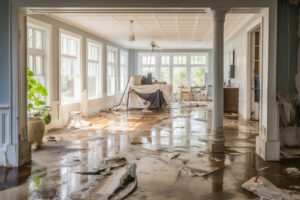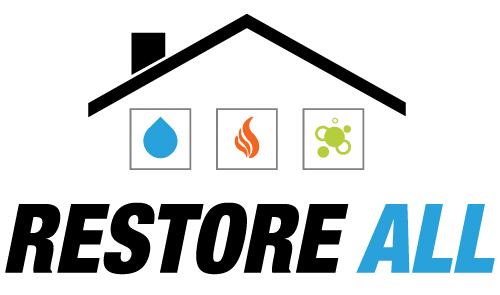 Floods can wreak havoc on homes and businesses, causing extensive damage and posing health risks. It is crucial to take immediate action to clean and dry your property to prevent further damage and mitigate potential health hazards. In this comprehensive guide, we will provide step-by-step instructions on how to effectively clean up after a flood, ensuring the safety and well-being of your family and property.
Floods can wreak havoc on homes and businesses, causing extensive damage and posing health risks. It is crucial to take immediate action to clean and dry your property to prevent further damage and mitigate potential health hazards. In this comprehensive guide, we will provide step-by-step instructions on how to effectively clean up after a flood, ensuring the safety and well-being of your family and property.
Initial Inspection and Safety Measures
Before diving into the cleaning process, it is essential to prioritize safety. Conducting a thorough initial inspection will help you identify potential hazards and take appropriate precautions. Here are some key steps to follow:
- Notify your insurance company: Contact your insurance agent as soon as possible to report the water damage. This will initiate the claims process and provide you with guidance on the necessary steps to take.
- Ensure personal safety: Floodwaters may contain contaminants, so it is crucial to protect yourself. Wear protective clothing such as long-sleeved shirts, long pants, rubber or plastic gloves, sturdy waterproof boots, and eye protection.
- Assess the exterior: Before entering your home, carefully examine the exterior for any visible structural damage, such as foundation cracks. If you notice significant damage, it is advisable to seek professional assistance before proceeding.
- Utilities: Ensure that electricity, gas, water, and sewer lines are turned off before entering your property. It is essential to have these systems checked by professionals to avoid any potential hazards.
- Document the damage: Take photographs or video footage of the damage to both the structure and its contents. This documentation will be crucial for insurance claims and can help in the restoration process.
- Wildlife and pests: Be cautious of snakes, insects, and other animals that may have sought refuge in your home during the flood. Take necessary precautions and consider professional assistance if needed.
Removing and Salvaging Contents
After ensuring your safety, it’s time to remove and assess the contents of your home. Promptly discarding water-logged items and salvaging what you can will prevent further damage and aid in the cleaning process. Here’s what you need to do:
- Remove water-logged items: Within 24 hours of the water receding, remove all furniture, carpeting, bedding, and any other items that have been extensively soaked. Prolonged exposure to water can lead to mold growth, making salvage impossible.
- Carpet and rugs: In most cases, floodwater renders carpets and rugs unsalvageable due to contamination. Replace affected carpeting and padding to eliminate potential health hazards.
- Furniture: Discard mattresses and upholstered furniture, as they are difficult to clean and disinfect thoroughly. However, plastic, metal, and solid wood furniture can be salvaged. Take them outside, hose off mud, and clean, sanitize, and let them dry away from direct sunlight.
- Food products: Dispose of all food items that have come into contact with floodwater. Even commercially sealed canned goods should be discarded unless you remove the labels, clean the cans, sanitize them, and relabel them with the expiration date.
- Important documents and photos: Freeze photos and important papers in plastic bags within a frost-free freezer until you can safely thaw and clean them. If necessary, seek professional assistance for their restoration.
Removing and salvaging items creates space for effective cleaning and restoration. Ensure that you have a clear plan for discarding unsalvageable items and organizing salvageable belongings.
Cleaning the Floors
Cleaning the floors is a crucial step in the post-flood cleanup process. Acting quickly to remove mud, silt, and excess moisture helps prevent mold growth. Follow these steps to effectively clean your floors:
- Removing mud and silt: Use a shovel or appropriate tool to remove mud and silt from hard surfaces. Once the bulk of the debris is cleared, use a garden hose to wash away any remaining dirt.
- Drying the subfloor: If you had carpeting or other flooring materials, remove them to expose the subfloor. It is essential to dry the subfloor as quickly as possible to prevent further damage. Wooden subfloors may swell if submerged for an extended period and require replacement.
- Tile and other hard surfaces: While tiles can often be salvaged, it is crucial to check the subfloor for water damage. Clean the tiles thoroughly, ensuring no moisture remains. Consider using a mold remover to treat any potential mold growth.
- Mold prevention: As you clean the floors, closely monitor for any signs of mold growth. If necessary, treat affected areas with a mold remover to prevent its spread. Use dehumidifiers and fans to promote airflow and aid in drying, which may take several weeks.
Cleaning the Walls
Floodwaters can seep into walls and lead to mold growth if not addressed promptly. Properly cleaning and disinfecting the walls is essential for a thorough restoration. Follow these steps:
- Opening flooded walls: To prevent odor, slow mold growth, and promote airflow within the walls, open all flooded walls. Remove any baseboard trim and drywall one foot above the waterline. Consider removing a section at the ceiling level to enhance ventilation.
- Salvaging plaster and paneling: Plaster and paneling may be salvageable if air can circulate within the wall cavities. Ensure that all damp insulation is removed from inside the walls. Clean visible mud from wall studs and spray them with disinfectant to control mold.
- Exterior walls: Pressure wash brick walls to remove any mud or debris. Wood and masonite siding may need replacement if water damage is extensive.
Cleaning the Basement
Basements are often the first areas to flood during a water-related disaster. It is crucial to remove the water and thoroughly dry the space to prevent further damage. Follow these steps for cleaning a flooded basement:
- Pump out water gradually: To avoid structural damage, pump out flooded basements gradually, no more than two feet of water per day. Rapid removal of water can exert pressure on the basement walls, leading to potential collapse.
- Use a dehumidifier: After pumping out the water, use a dehumidifier to extract moisture from the air and woodwork behind the walls. This step is vital in preventing mold growth and aiding in the drying process.
- Clean and sanitize: Clean concrete walls thoroughly, ensuring they are free from mud and contaminants. Apply a disinfectant to sanitize the walls and prevent mold growth.
Cleaning the basement requires careful attention to detail and diligent drying to avoid further damage and mold growth. Seek professional assistance if needed.
Cleaning up after a flood is a challenging task that requires thoroughness and attention to detail. By following the steps outlined in this comprehensive guide, you can effectively clean and restore your property while minimizing health risks. Remember to prioritize safety, document the damage for insurance purposes, and seek professional assistance when necessary. With proper cleaning and drying, your home will be on its way to recovery, allowing you to rebuild and restore normalcy in your life.
Contact Us (954-338-1111) for a Free Estimate!
—
 About Restore All
About Restore All
Restore All, LLC is a licensed, insured, full-service Professional restoration company providing Water, Fire and Mold remediation and restoration for residential and commercial property. Our certified Water & Fire damage technicians and licensed Mold assessors & remediators are committed to providing professional restoration and fast and affordable service 24 hours a day. Call us today at (954) 338-1111 to see how we can help.
> Learn More

 About Restore All
About Restore All